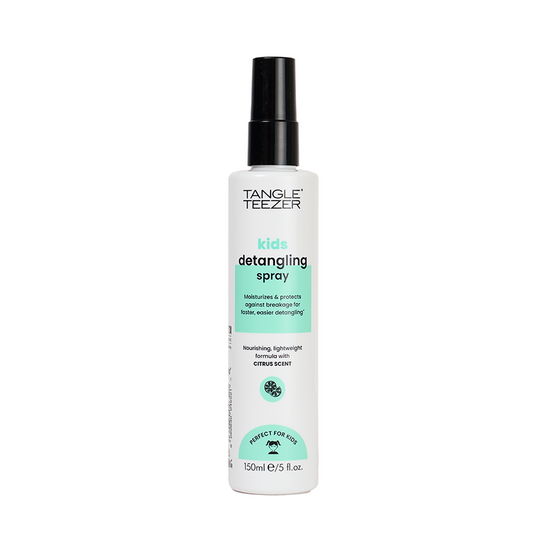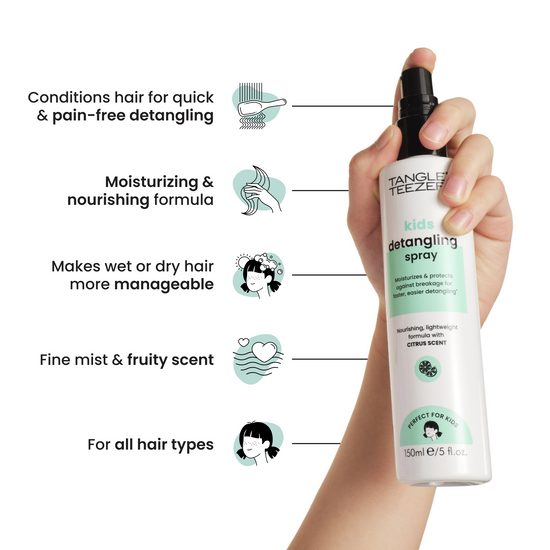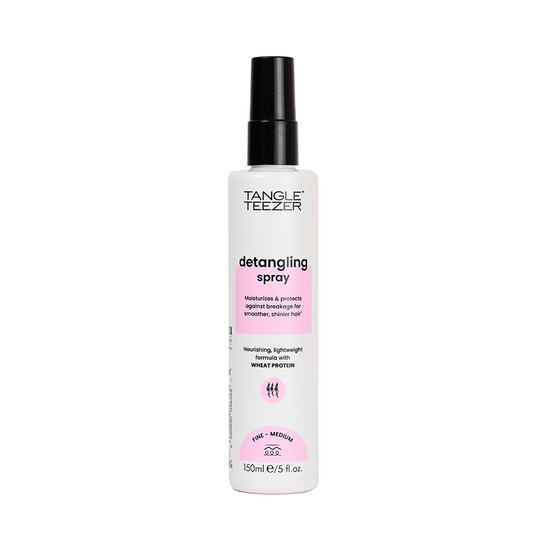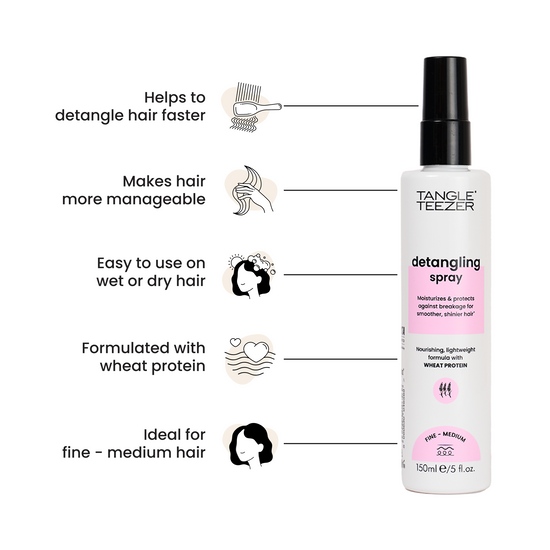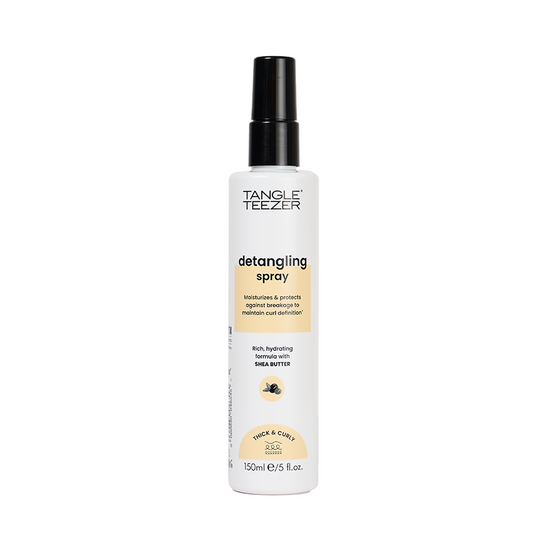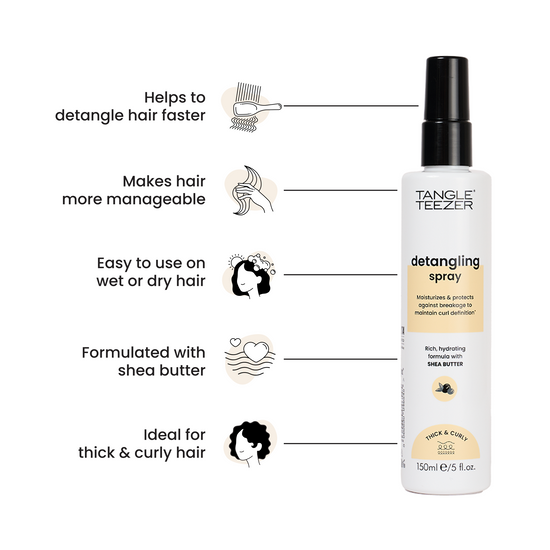Most people who have naturally curly or coiled hair know about "coils," which are those little spirals of hair that make up the curl pattern for our natural texture. The bigger the coil, the tighter and more defined the curl pattern is. On the other hand, smaller coils cause looser curls with less definition. The size of your coils also plays a role in how easy it is for you to manage your natural texture on a daily basis.
Due to the tight coils and low moisture retention, styling can be challenging for women with 4C hair. However, there are plenty of ways to achieve your own personal look without compromising your texture. If you have 4C curls, read on for an overview of damage and detangling solutions for your unique hair type.

What is 4C hair?
4C hair is naturally curly or coiled and has high shrinkage. People with this hair type may have all their hair fall into the 4C category, or they may have a combination of 4C and 2C hair. The average diameter of the hair shaft is between 17 and 21 millimeters, but people with 4C hair typically have a diameter of less than 18 millimeters, which is the technical definition of coiled hair. Most 4C hair textures fall under a low porosity, high shrinkage category, which means that the hair has a tough time absorbing moisture, is very fragile and easily breakable, and shrinks a lot when it's wet.

@limitlessbloom
How to Maintain Healthy Natural Coily Hair
If you want your hair to be healthy, it’s important to learn how to maintain it. Although it may be a little trickier than taking care of other hair types, it’s definitely manageable if you put in the effort. Start by washing your hair less frequently. This will help preserve the natural oils in your hair which are the source of healthy hair. If you are washing your hair every day, you are stripping away these oils, which can result in brittle, dry hair. For those with 4C hair, the trick is to use a gentler shampoo that won’t strip your hair of its natural oils. Next, use a conditioner that is specifically made for coarse hair. Since coarse hair is thick, it doesn’t have many cuticle scales, so it is naturally less moisturised.
How to Detangle 4C Hair?
If you have ever had 4C hair, you know that this type of hair is notoriously difficult to detangle. The single best thing you can do to prevent hair breakage when detangling 4C hair is to condition it as you are detangling. The more you tug on your hair while trying to detangle it, the more likely you are to break off your hair. One technique that you can try while detangling your hair is to create smaller sections. This will make it easier for you to comb through your hair without tugging on it too much. You can also try using a Wide Tooth Comb or a Hair Pick.
How to Repair Damaged 4C Hair?
It’s best to focus on repairing the ends of your hair as they are usually the first parts of your hair that become damaged. So, how do you repair damaged 4C hair? First, you can book an appointment at your local hair salon to cut off the damaged parts of your hair. You should also protect your hair from future damage with the right shampoos and conditioners. When selecting the best shampoo for you, you’ll want to look for products that are sulfate-free. Sulfates are the compounds that produce that bubbly lather in many shampoos. They also strip your hair of natural oils on your scalp. To keep your hair protected from future damage, try using a deep conditioning treatment at least once every week. You can also try using heat protectants on the days that you use heat on your hair.

@naturalblackgirliee_
1. Don’t Shower with Hot Water
For 4C hair, you should be showering with lukewarm water. You may have heard that hot water is better for cleaning your hair, but this isn’t true. Hot water can strip your hair of its natural oils, which can cause your scalp to produce more oil. If your hair is already oily, this may not be a problem but, if you have naturally dry hair, this can leave your hair feeling brittle and dry. This is especially important if you have curly or coiled hair because this type of hair is more fragile than others.
2. Don’t Use Heat on a Daily Basis
If your hair is curly or coiled, you should be using heat on your hair as little as possible. Your hair is fragile and is easily damaged using heat. If you must use heat, the best way to do it is to use a lower temperature, for as short of a time as possible, and to use a heat protectant spray or mist. You could also try using a cooler setting on a hair dryer. The most damage occurs when your hair is wet and exposed to high heat. This means that it is best to wait until your hair is almost completely dry before you use a hair dryer or a straightening iron on it. If you want to use a hair dryer while your hair is still wet, try to use the lowest heat setting available.
3. Use the Right Products for Your Hair Type
It’s important to remember that all hair types are different. What works for one person may not work for another, even if their hair type is the same. While there are many products on the market that claim to be great for all hair types, these products often don’t work for curly hair. When you are shopping for hair products, it’s a good idea to look for products that are specifically formulated for curly hair. These products will have ingredients that are suitable for your hair type.
Embracing Your 4C Hair
An estimated one in three people has curly, coiled, or kinky hair. And as the global population of people with 4C hair increases, so should the inclusivity of natural hair in the workplace. The CROWN Act (Creating a Respectful and Open World for Natural Hair) is a bill that was created to make hair-based discrimination illegal in the United States. On the 3rd of July, Crown Act Day commemorates the signing of the CROWN Act legislation and is an opportunity to celebrate natural hair textures and hairstyles such as braids, twists, dreadlocks, and bantu knots.

If you have 4C hair, you’ll most likely know how difficult it can be to manage your hair on a daily basis. This type of hair is notoriously fragile and easily damaged, which means that it requires special attention and care to avoid breakage. If you want to keep your hair healthy, you need to know how to take care of it. This means washing it with lukewarm water, avoiding the use of heat as much as possible, and using the right products for your hair type. With a little bit of effort, you can easily treat damaged or tangled hair.
